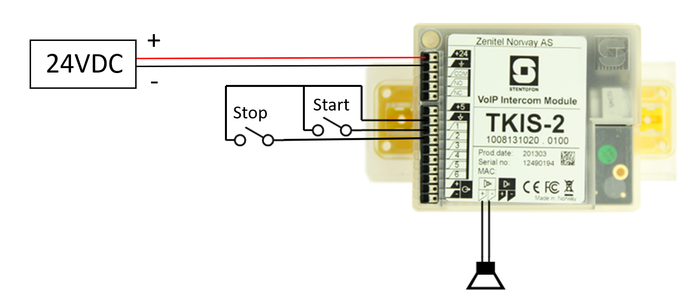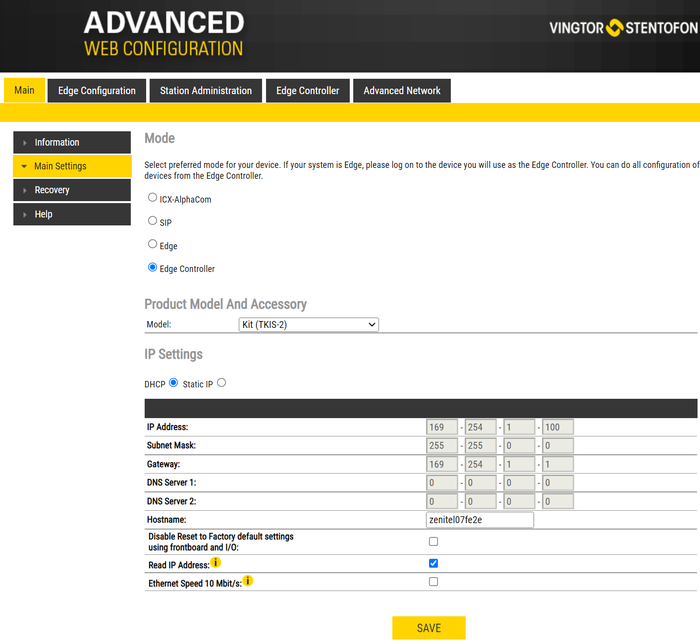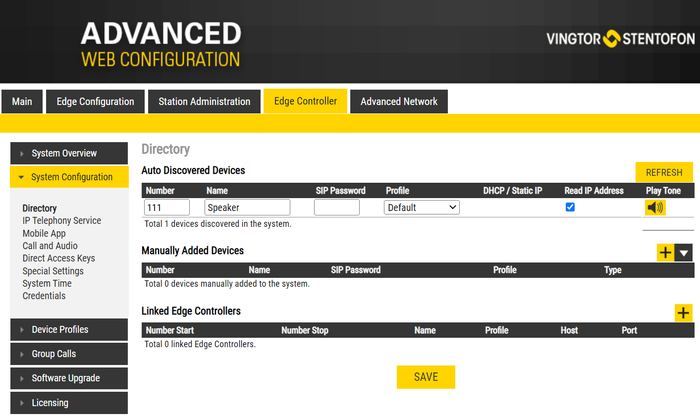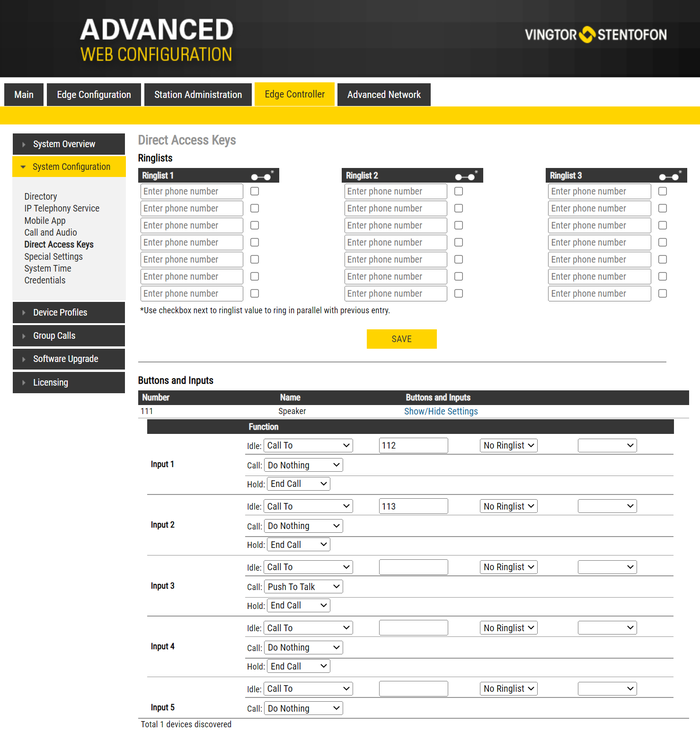Audio Message from Standalone IP Speaker
From Zenitel Wiki
The use case is that we have a standalone IP speaker and with the push of a button we want start playing a message in an endless loop. A second button is going to be used to stop the message playing.
Contents
Hardware wiring
For the man overboard we will have two buttons:
- One to start playing the message
- One to stop playing the message
Since it is a standalone speaker there is no network, except when configuring. Inside the speaker there is a TKIS-2 kit. This is displayed in the picture below.
 |
| Wiring the TKIS-2 inside the speaker |
Configuration
The kit is set up as an Edge controller. We need to configure the inputs and the audio message.
Setting up as Edge controller
In the usual way we set up the device as the Edge controller. We do this by checking the box “Edge Controller” in the main settings page.
 |
| Setting as the Edge Controller |
After this we give the device a number in the directory so it registers to itself. We do this in the page Edge controller, System configuration, Directory.
 |
| Assigning the directory number |
The inputs
The inputs 1 and 2 are used to start and stop the message. This is done by calling nonexistent numbers and the stop message function.
 |
| Configuring the inputs |
The call of course will fail but still generate an “call ended” event. That we will utilize for the audio messages.
The audio message
The start and stop of the audio messages is tied to the “call ended” event. In the previous chapter fake numbers were assigned to the inputs. These numbers must correlate with the numbers used for the call ended events. For example in the previous chapter input 1 was assigned fake number 112 and in this chapter we assign call ended with number 112 to start the message. The message is set to repeat so it will keep looping till we stop the message with the call ended to 113. The pause is to give a moment of silence between repetitions.
 |
| Configuring the audio message |
Multiple messages
If you want to use multiple messages you assign more inputs to fake numbers and use the same method “call ended” event to start the messages. You still only need one stop message.

